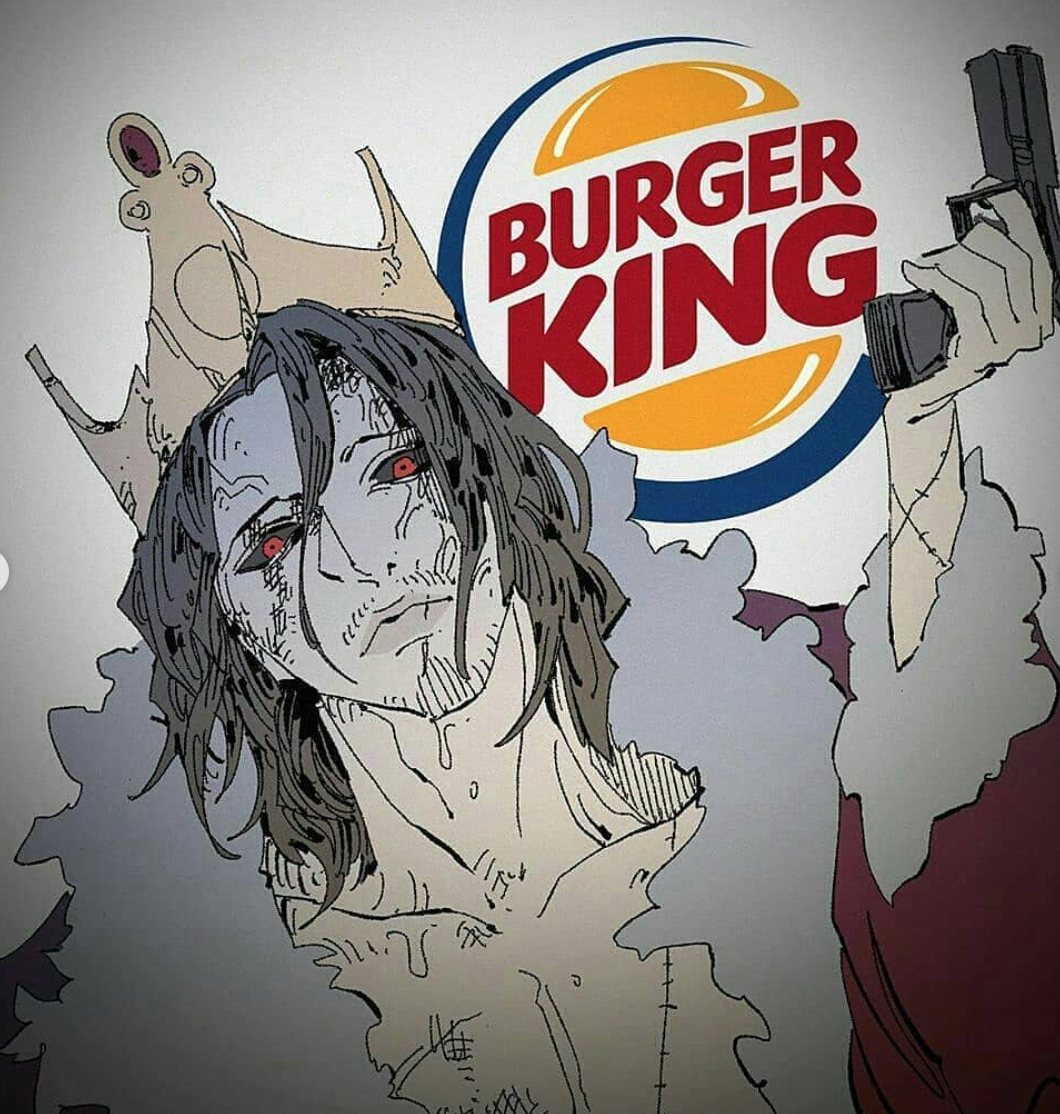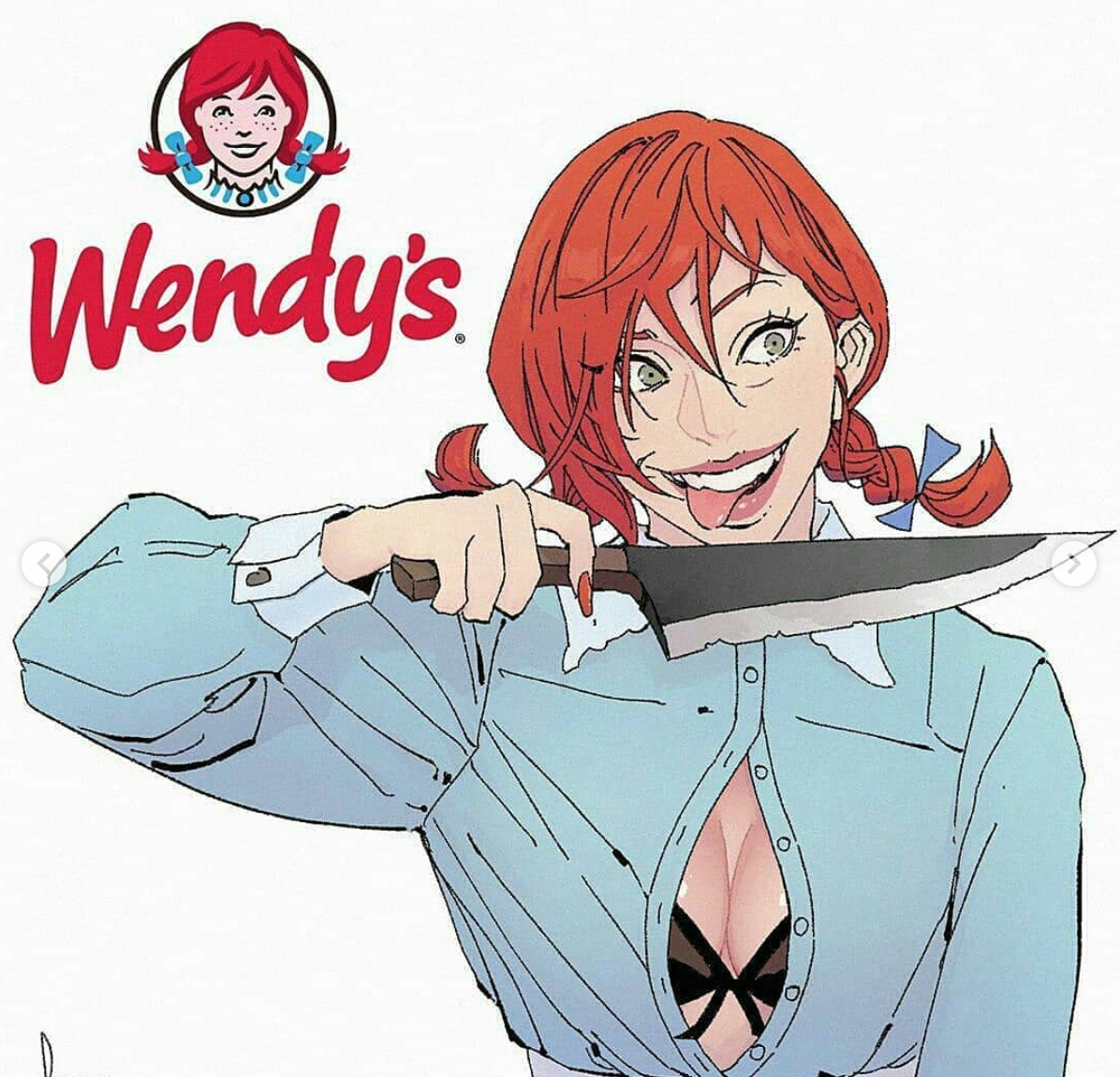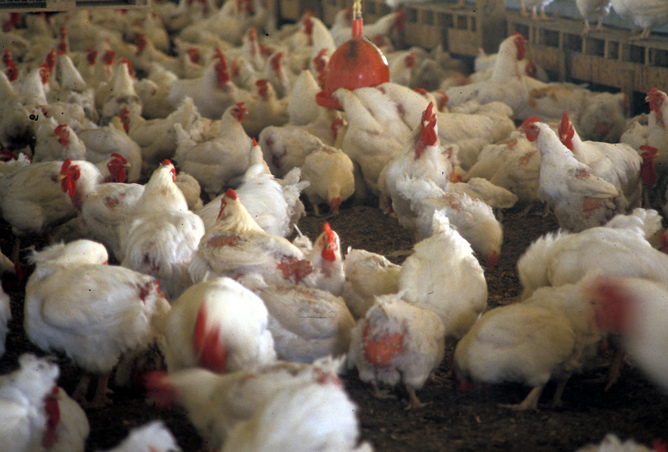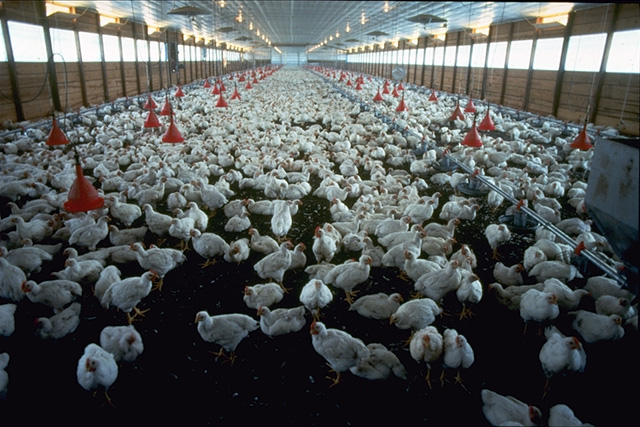The Fried Chicken Sandwich War Ruined my Vegas Vacation
Those who say what happens in Vegas stays in Vegas haven’t yet eaten the now-famous fried chicken sandwich from Popeyes. Every year, my sister and I gather a couple of our gal pals and go all-out for an end of summer celebration in Las Vegas. No rules, no budget, no regrets.
Except one.
We arrived on a wonderful, 104-degree Thursday. The sun was shining and our hopes were high as we scanned The Cosmopolitan hotel for gorgeous men, beautiful women, and—of course—food. Not only does the Cosmo withhold late night hideaways like Secret Pizza, and early morning saviors like Eggslut, but the hotel now also houses a new food hall, Block 16. There’s District: hundreds of rotating flavors of donuts, cheesy, meaty sliders, and coffee and espresso strong enough to carry you from pool party to nightclub; Hattie B’s serves up mouth-numbingly spicy fried chicken and sweet and silky banana pudding; and I can’t forget Lardo (their catchphrase: “bringing fat back”), a sandwicherie delivering bold and satiating subs like Korean pork shoulder with a side of their signature “dirty fries” topped with goodies like crispy pork bits, banana peppers, and parmesan.
Burgers, Banh Mi, Donuts, and more from Block 16.
Photo from The Cosmopolitan’s Instagram
With all these options, I never imagined that the overnight sensation that was the Popeyes fried chicken sandwich would cross my path. Then again, I also never imagined that by 5pm we’d be in a hotel room, crashing a bachelor party, knocking back shots and twerking to Lizzo’s “Truth Hurts.” Vegas is full of surprises. As I catch my breath to take in my surroundings, I notice a small pile of white paper bags on the credenza. I take a closer look and a giant orange “P” comes into focus, then the phrase “Louisiana Kitchen.”
Don’t tell me…
An inebriated bachelor notices my rapt attention and excitedly announces that it is time to try the “legendary Popeyes chicken sandwich!” Yes, folks, in 2019 even a fast-food item can become legend in no less than 24 hours.
I sit down on the couch next to him and watch his hand fish for the fried treasure within. The sandwich emerges and I am surprised it’s not the sad-looking, saggy fast-food chain item I’m accustomed to (sorry, McDonald’s and Burger King). The brioche buns are warm and spongy—it is a little larger than your typical Whopper or Chick-fil-A sandwich and sits nicely in my grasp. I even notice that the buns are slightly toasted, a nice touch. I am surprised by the craggy, crispy exterior of the buttermilk breading. I have never seen a fast-food sandwich adorn a fried coating and not become a soggy grease bomb that falls apart as soon as you touch it. I am intrigued, nervous, and hungry all at the same time.
Photo from Popeyes
First, a small whiff: the spice mixture of the breading is indeed spicy. My nostrils fill with cayenne, onion, red pepper, garlic, and maybe…paprika? My eyes water just by scent alone. I begin to waver, unsure if I can handle this level of heat. But I notice just beneath the bun are some small rounds of vinegary pickles and a thin layer of mayonnaise. The additions of fat and acid would surely fortify my nose and mouth from any danger.
I open wide and feel my teeth work their way through the brioche, first like biting into a pillow, then a little bit of crispiness from its toasted underbelly. As my canines dive head-first into the heart of the sandwich, the golden brown breading begins to crackle and shatter, giving way to the chicken inside. The menu boasts that it is an “all-white meat chicken breast…” I flashback to the horror videos of pink, gelatinous goop squirting from machine-operated piping bags and receiving the label “McDonald’s chicken nuggets.” I offer the benefit of the doubt, though, and push those vile images away. The texture of the meat barely makes it over the hurdle of soft rubber to register as moist and juicy chicken. I sense the spice mixture looming over my taste buds, but the tang and crunch from the pickles—supported by the cooling, creamy taste of the mayo, absolves me from burning in a fiery, fried chicken Hell.
Reality sets in. Wait, that’s it? It was one of those feelings of inviting the hottest guy from the club back to your hotel room, only to awake the next morning filled with confusion and a tinge of disappointment. Did the legendary Popeyes fried chicken sandwich have some performance anxiety?
My sandwich experience was over, but I could not stop thinking about it. Why? Why is this sandwich the one people are going crazy for?! I didn’t get it, and I had to find out why. Suddenly I had a new goal for my Vegas vacay. I spent the following days going down various Popeyes rabbit holes for clues and answers. I scanned through tasting videos while waiting for my tequila soda at the bars. I ignored requests for my Instagram or phone number and instead inquired if my handsome suitors had tasted the “legendary” fried chicken sandwich. I even stopped by the Popeyes on Las Vegas Boulevard and Flamingo Road. The Marquee pool party would have to wait.
The hype was real. Too real. I couldn’t believe my eyes, taking in the sight of lines out the door, people running about with their paper bags, and phones flailing in the air, desperate to document the experience of purchasing 2019’s possibly most viral sandwich.
“It’s the drama of the thing,” I was told.
“I just wanna see Chick-fil-A freak out and make something to top it,” said another.
“My vote is that Wendy’s will somehow come through and surprise us all…” she said while looking ominously into the distance.
That’s when it hit me. I spent all this time on my vacation theorizing, researching, and hypothesizing what made the Popeyes fried chicken sandwich so great, but it’s not the sandwich that’s great. After all, my research revealed that some establishments, including one in Manhattan, has been selling the sandwich for almost a year. So it’s neither the excitement of a debut nor a limited addition item that got people so hyped up. Instead, it’s the thought of Ronald McDonald, the Burger King, and a giant Cow battling it out for our love and money. I immediately felt deflated and betrayed. Here I was, genuinely thinking that Popeyes cared about providing the world with a delicious and affordable chicken sandwich. The Popeyes fried chicken sandwich is not legendary for its taste. It is legendary for its ability to utilize the currently food-obsessed pop culture climate to feed us bogus foodstuffs for boatloads of cash. The fast-food industry is making fools out of us, and we’re playing along.
art by SILLVI Illustrations
I’m not trying to be a buzzkill. All this hubbub is undeniably entertaining. But first, I think it needs to be acknowledged that these sandwiches are most likely derived from chickens pumped with antibiotics and fed a diet of pesticide-laced feed. Thanks to genetic manipulation, poultry bred to keep up with the fast-food demand have a lifespan shorter than 50 days. They are housed in immense warehouses and packed like sardines. Forced hatchings yield birds born with lameness, and manure-covered floors increase the onset of respiratory disease and infection. It’s hard to believe that our government still lets these birds be labeled “free range” for our consumption.
Let’s Talk about Chicken.
Americans consume more chicken than anyone else in the world – more than 93.5 pounds per capita. Over the past 20 years, improvements in genetic engineering and molecular biology have helped chicken breeders develop birds that grow exponentially faster and larger, and with less chance of disease. In order to do so, livestock operations burn through about 70% of “medically important” antibiotics (those administered to humans with the onset of infection) used in the United States. This is not without suspicious repercussions. A report in 2016 revealed that antibiotic-resistant microbes sickened 2 million Americans and killed 23,000. The Food and Drug Administration and the Centers for Disease Control and Prevention attributed this resistance to the meat industry’s reliance on antibiotics…However an analysis in that same year revealed that two-thirds of chicken meat was also infected with salmonella, campylobacter, or both.
It seems that the filthy and cramped living conditions of birdhouses leave their feathered tenants highly susceptible to disease, even though there are measures taken to ensure satisfactory biological conditions of birds. By law, animals given an antibiotic cannot be processed until they undergo a withdrawal period. The duration is verified by the USDA, and facilities are required to routinely test chickens before they leave a processing plant. But the human side to this is most intriguing. In 2018, the World Health Organization reported that the bacteria most resistant to antibiotics are Escherichia coli (E. coli), Klebsiella pneumoniae, Staphylococcus aureus, Streptococcus pneumoniae, and Salmonella. The most four common bacteria carried by chickens? Salmonella, Listeria, Campylobacter and E.coli.
Maybe I was reaching too far, but I was still connecting dots. My picture came into greater focus when I read that, according to the CDC’s National Center for Health Statistics, 22.7% of Americans get their breakfast from a fast-food chain. 43.7% of Americans pick up a quick meal from a chain for lunch, and 42% of those grab-n-go again for dinner. The QSR (Quick Service Restaurant) industry made $256 billion in 2018 (read more here). The typical American spends about $1,200 on fast food annually, which breaks down to $100 a month and roughly $12.50 per meal. In 2015, it was reported that 3% (9.5 million) of Americans eat fast food everyday. In 2018, this became 37% (85 million). Not only are more than 30% of Americans obese, but could our fast food consumption also leave us more resistant to antibiotics we rely upon to save us from infection?
But it’s not Just About the Birds.
I digress. We know that fast food is bad for us, antibiotic resistance remains a major medical quandary, and that the obesity epidemic is a cemented piece of our national reality. As a result, I wanted to examine the psychological tolls the Popeyes fried chicken sandwich took on America. Business Insider released an article with interviews from anonymous Popeyes employees disclosing their workdays during the fried chicken frenzy. One Orange County employee estimated that he made at least 600 sandwiches during an 11-hour shift. Customers also made ridiculous requests and became hostile when locations began to sell out. One employee remembered a single order of 35 spicy chicken sandwiches, while another was almost attacked by an angry customer in line.
Apparently, it was not uncommon for workers to go entire shifts without taking breaks. One worker endured 65 hours over six days. Another said their restaurant had shifted to mostly completing orders, neglecting tasks like sweeping and washing dishes. Stress levels became incredibly high. In Newark, New Jersey, an employee quit in the middle of her shift. Business Insider quoted her: "the added demand increased the amount of work tenfold, while I still get paid next to nothing." Popeyes employees are paid between $8-15 per hour.
And so I went about the rest of my vacation in a fried chicken sandwich slump. Neither the sight of godlike men, body-rolling in my face at Magic Mike Live, nor a bottle of Don Julio 1949 could uplift me. Not even a live performance of “Shots” from Lil’ John at Hakkasan raised my spirits. How was I supposed to enjoy a weekend of nonstop partying when my mind was filled with images of diseased chicken carcasses, viral memes, and twitter wars?! I returned from the sin city regretting that I had given in to the temptation of the Popeyes fried chicken sandwich. But I don’t mean to burst the Popeyes bubble for everyone. While I admit it was delicious, I think we all need to be a little bit more aware of what’s really going on when a fast-food chain skyrockets a fried chicken sandwich to celebrity stardom.
It’s not about eating food that’s bad for you. It’s not about rallying all your friends to protest industrial livestock production. It’s about how food, corporate America, and pop culture intersect to manipulate consumer preference and buying power. Sure, the sandwich may be worth the likes, shares, views, and money in the moment. But if a fast food twitter war can ignite national hysteria, what else will capitalism try to tell us what to do with our dollars? Now that the sandwich is sold out in nearly every location, I think we can let the dust settle, and let Popeyes employees commit to some good trauma therapy. This is a moment we’ll all look back on and laugh about, I’m sure. All I’m saying is, I think that the “legendary” Popeyes fried chicken sandwich will be all the more legendary if we allow the saga to come to a close.









